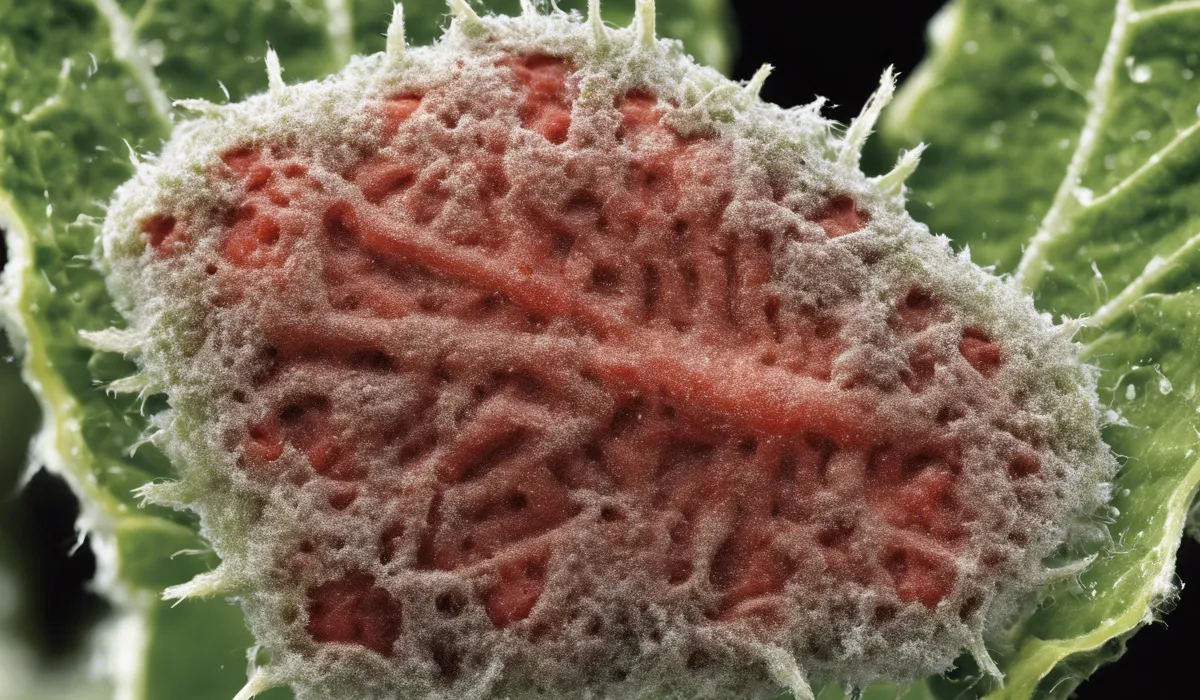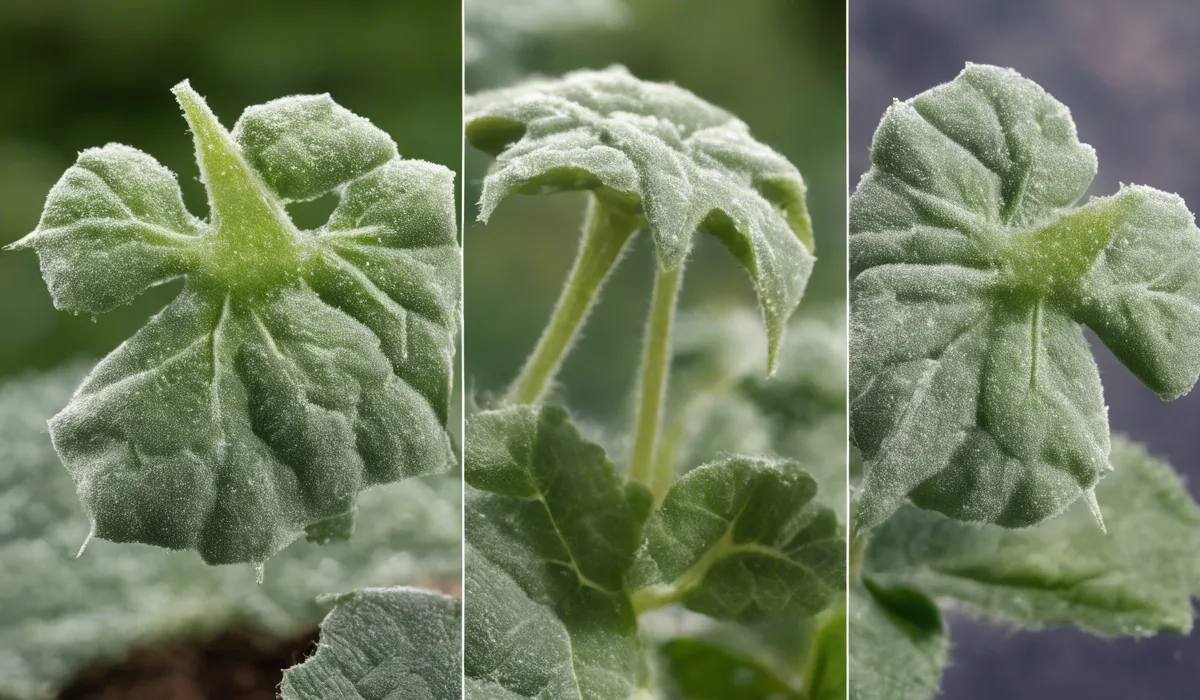Yes, Daconil (chlorothalonil) is effective at killing powdery mildew. It is a broad-spectrum fungicide used to protect plants from this fungal disease. Apply as directed on the label for best results against powdery mildew.
Understanding Powdery Mildew and Its Impact on Plants

Definition of Powdery Mildew
Powdery mildew refers to a group of fungal diseases that attack a wide range of plants, creating a distinct white or gray powdery coating on leaves and stems.
This disease thrives in warm, dry climates and can rapidly spread, affecting the photosynthesis process in plants.
Common Plants Affected by Powdery Mildew
Many beloved garden plants and crops can fall victim to powdery mildew. Roses, grapes, cucumbers, and squash are particularly susceptible, though the disease can affect a variety of ornamentals and vegetables alike.
Symptoms of Powdery Mildew Infestation
The first sign of powdery mildew is usually the appearance of powdery white spots on the foliage.
As the disease progresses, leaves may turn yellow and dry out, leading to premature leaf drop and a general weakening of the plant.
Lifecycle of Powdery Mildew Fungus
Powdery mildew fungi propagate through spores, which can be spread by wind or insects.
Under favorable conditions, these spores germinate on the plant surface, growing and reproducing rapidly in a cycle that can cause recurring infections throughout the growing season.
Potential Damage Caused by Powdery Mildew
If left unchecked, powdery mildew can significantly impact plant vigor and fruit production.
Infected plants may suffer from stunted growth, reduced yields, and in severe cases, plant death, which could lead to considerable loss for both home gardeners and commercial growers.
Effectiveness of Daconil in Treating Powdery Mildew

Composition and Active Ingredients of Daconil
Daconil, known by its chemical name chlorothalonil, is a broad-spectrum fungicide. It is widely used in gardens and agriculture to combat various fungal diseases, including powdery mildew.
The active ingredient disrupts essential processes in the fungal cells, leading to their demise.
How Daconil Works Against Fungal Diseases?
Daconil acts by inhibiting spore germination and mycelial growth, effectively stopping the fungi from feeding and growing on the host plants.
It is a contact fungicide, meaning it must be applied directly to the affected areas to be effective.
Efficacy of Daconil Against Powdery Mildew
When used as directed, Daconil is highly effective at controlling powdery mildew. It helps protect new foliage from being infected and limits the spread of the disease on already affected plants.
Studies or Research Supporting Daconil’s Use for Powdery Mildew
Numerous studies have demonstrated the effectiveness of chlorothalonil-based fungicides like Daconil in managing powdery mildew.
These studies show that regular application can significantly reduce the presence and impact of the disease on crops.
Comparative Analysis with Other Fungicides
While there are many fungicides available, Daconil is favored for its broad-spectrum activity and effectiveness.
Compared to other products, it often provides more reliable control of powdery mildew and other fungal diseases.
Best Practices for Using Daconil to Control Powdery Mildew

Safety Considerations and Precautions When Using Daconil
It is crucial to follow safety guidelines when using Daconil. Protective clothing, gloves, and eyewear should be worn during application to prevent skin and eye contact.
Ensure that you apply it in well-ventilated areas and avoid inhaling the spray mist.
How to Properly Mix and Apply Daconil?
Mix Daconil according to the instructions on the label. It is typically diluted with water and applied using a sprayer.
Ensure thorough coverage of the plants, including the undersides of leaves where powdery mildew often begins.
Optimal Timing and Frequency of Applications for Best Results
The best time to apply Daconil is at the first sign of disease or as a preventative measure. Regular applications, as outlined on the product label, will help keep powdery mildew at bay and protect your plants throughout the season.
Tips for Preventing the Development of Powdery Mildew
Prevention is key in managing powdery mildew. Maintain good air circulation around plants, avoid overhead watering to keep leaves dry, and prune overcrowded areas.
Healthy plants are less susceptible to disease, so keep them well-nourished and stress-free.
Integrated Pest Management Strategies Including Cultural and Chemical Controls
Integrated Pest Management (IPM) is a holistic approach that combines cultural practices, such as proper plant spacing and sanitation, with the judicious use of chemical controls like Daconil.
This approach helps to minimize reliance on chemicals while effectively managing diseases.
FAQs About Daconil and Powdery Mildew
Does Daconil effectively treat powdery mildew on plants?
Yes, Daconil (chlorothalonil) is an effective treatment for powdery mildew on plants when used according to the label instructions.
Is Daconil a broad-spectrum fungicide?
Yes, Daconil is a broad-spectrum fungicide, meaning it can protect plants from a variety of fungal diseases, including powdery mildew.
How should Daconil be applied to combat powdery mildew?
Daconil should be applied according to the directions on the product label to ensure the best results against powdery mildew.
Can Daconil be used as a preventative measure against powdery mildew?
Yes, Daconil can be used preventatively to protect plants from developing powdery mildew.
How often should Daconil be applied to control powdery mildew?
The frequency of Daconil application should follow the guidelines provided on the label, which may vary depending on the plant and environmental conditions.
Final Thoughts
Daconil (chlorothalonil) is confirmed to be an effective treatment for powdery mildew, serving as a broad-spectrum fungicide.
It is designed to safeguard plants from this common fungal ailment. To combat powdery mildew successfully, it is crucial to adhere to the application instructions provided on the product’s label.
